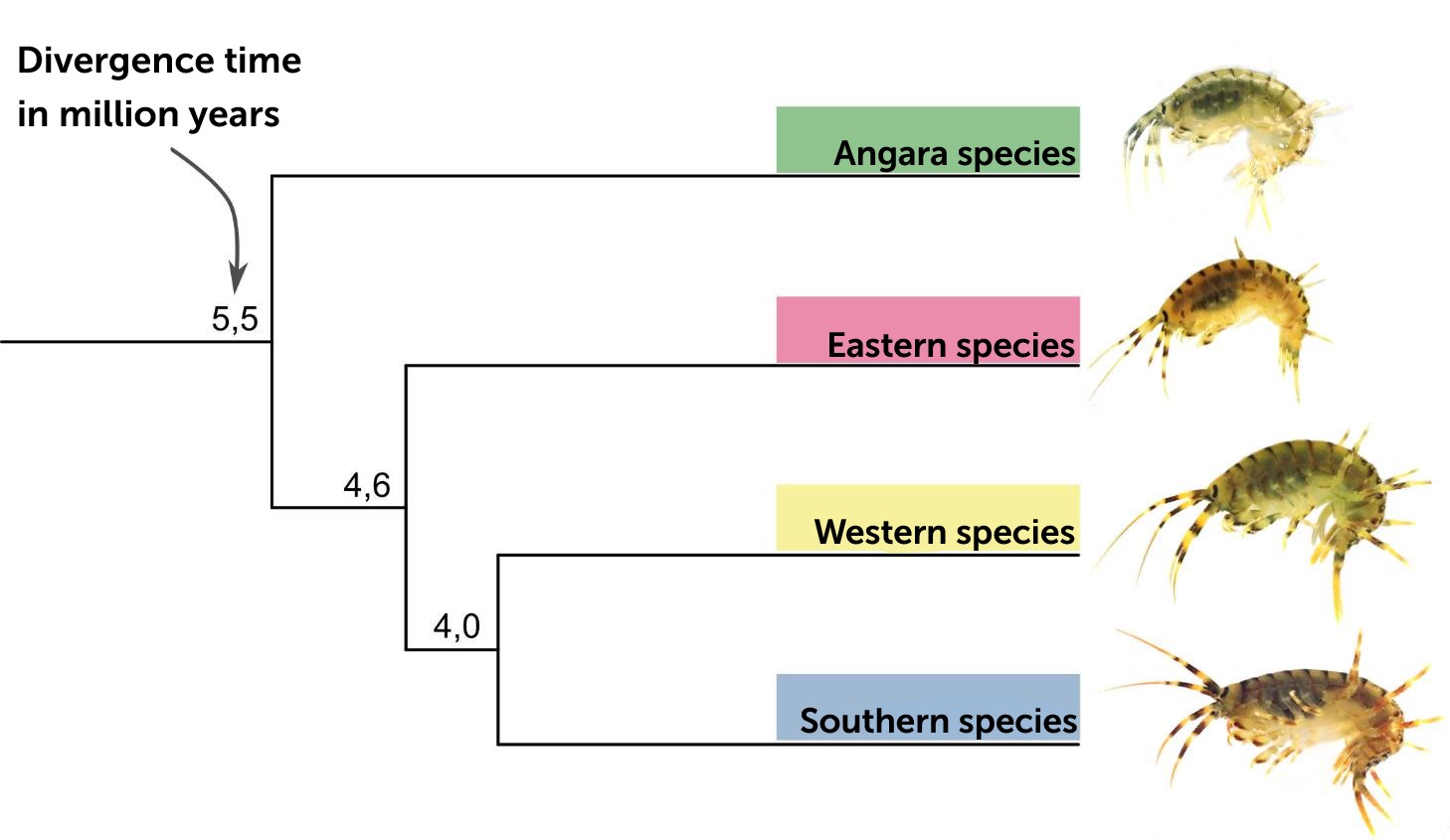Researchers at ISU Research Institute of Biology have discovered a new species of freshwater crustaceans in the Angara River. It turned out to be a “twin” of the crustaceans Eulimnogammarus verrucosus living in Lake Baikal. At the same time, the new species is several million years older than its Baikal relatives, despite the fact that Angara was formed tens of millions of years later than Lake Baikal. This suggests that the Angara species used to live in the warm coastal areas of the lake, and only relatively recently (100-150 thousand years ago) it “moved” into the river. The results of the study, supported by a grant from the Russian Science Foundation (RSF), are published in the journal Zoologica Scripta.
Lake Baikal is known for its rich flora and fauna, and some of the species living in it are endemic, meaning they do not occur in any other places. Thus, more than 350 species and subspecies of amphipod crustaceans, resembling shrimp in appearance, have been described in Lake Baikal, while scientists admit that even more species may still be unknown to science. The search for new species is complicated by the fact that they can be “twins” (cryptic species) of already known crustaceans, having absolutely identical appearance, but differ genetically.
For example, recently researchers from Irkutsk State University have determined that one of the most widespread species of crustaceans in the coastal zone of Lake Baikal amphipod crustaceans Eulimnogammarus verrucosus actually is not one, but as many as three cryptic species. Moreover, the different species are very clearly separated geographically: some crustaceans inhabit the western shore of Lake Baikal, the second – the eastern, and the third – the southern.
In the new work, the authors decided to find out whether cryptic species of Eulimnogammarus verrucosus are found not only in Lake Baikal, but also in the only river flowing out of it – the Angara. Angara is interesting because it is quite young – its age does not exceed 100-150 thousand years, which is very young compared to the age of Lake Baikal itself, which is estimated to be 25-30 million years.
Scientists captured 149 crustaceans at 17 collection points located at a distance of half a kilometer to 650 kilometers from the source of the Angara River and analyzed their genetic diversity. The most unusual discovery was the genetically independent Angara cryptic group of crustaceans, which is not found in Lake Baikal and was previously unknown to scientists. This group has already become the fourth “twin” species of Eulimnogammarus verrucosus in addition to the three previously described. Next, the authors estimated the evolutionary age of all discovered “twin” species of Eulimnogammarus verrucosus. The new Angara species turned out to be the “oldest” of the entire group – it appeared about 5.5 million years ago, millions of years before the formation of the Angara River itself.
















